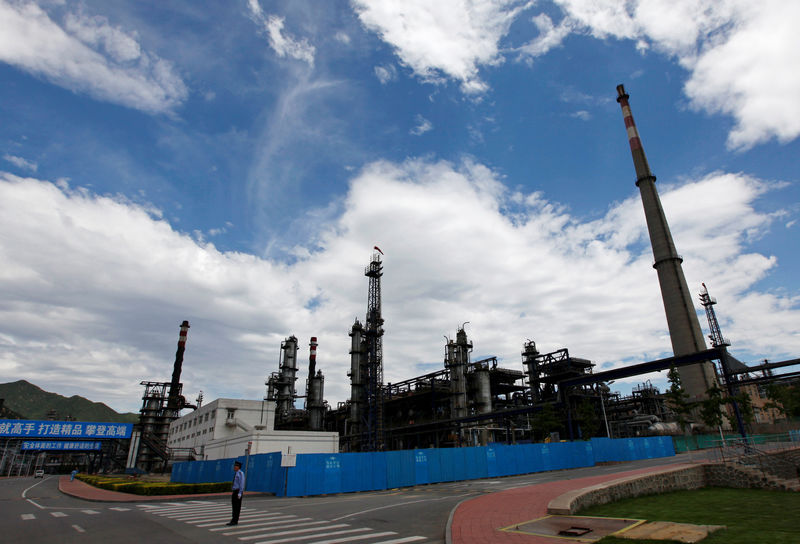By Henning Gloystein
SINGAPORE (Reuters) - Oil prices held firm on Monday, supported by strong demand, a weak dollar and ongoing supply cuts lead by OPEC and Russia, although soaring U.S. output means many analysts expect crude prices to fall later in the year.
U.S. West Texas Intermediate (WTI) crude futures (CLc1) were at $66.34 a barrel at 0144 GMT, up 20 cents, or 0.3 percent, from their last settlement.
Brent crude futures (LCOc1) were at $70.49 per barrel, 3 cents below their last settlement.
Oil markets have been propped up by supply restraint lead by the Organization of the Petroleum Exporting Countries (OPEC) and Russia, which started in January last year and are scheduled to last through 2018.
This supply restraint, coupled with oil demand growth, has contributed to a near 60-percent rise in crude prices since mid-2017.
Traders said oil has also been supported by a weakening dollar, which has lost over 3 percent in value against a basket of leading currencies (DXY) since the start of this year and is down by almost 13 percent since January 2017.
"Loose fiscal policy in the U.S., a recovery in growth in Europe and an acceleration in EM (emerging market) growth have all combined to push the dollar lower and oil prices higher," Bank of America (NYSE:BAC) Merrill Lynch said in a note.
U.S. bank JP Morgan said it had increased its 2018 average price forecast by $10 per barrel to $70 per barrel for Brent and by $10.70 per barrel for WTI to $65.63.
"We expect Brent to touch close to $78 per barrel towards end of Q1 2018 or early Q2 2018," it added.
JP Morgan said the increase was largely due to OPEC withholding supplies, but added it expected prices to fall towards the end of the year as markets become "flush with oil from (U.S.) shale and other unconventional oils."
U.S. crude production
Output is expected to break through 10 million bpd soon. U.S. energy companies added 12 oil rigs drilling for new production last week, taking the total to 759, General Electric (N:GE) Baker Hughes energy services firm said on Friday.

U.S. production is already on par with top exporter and OPEC kingpin Saudi Arabia. Only Russia produces more, averaging 10.98 million bpd in 2017.